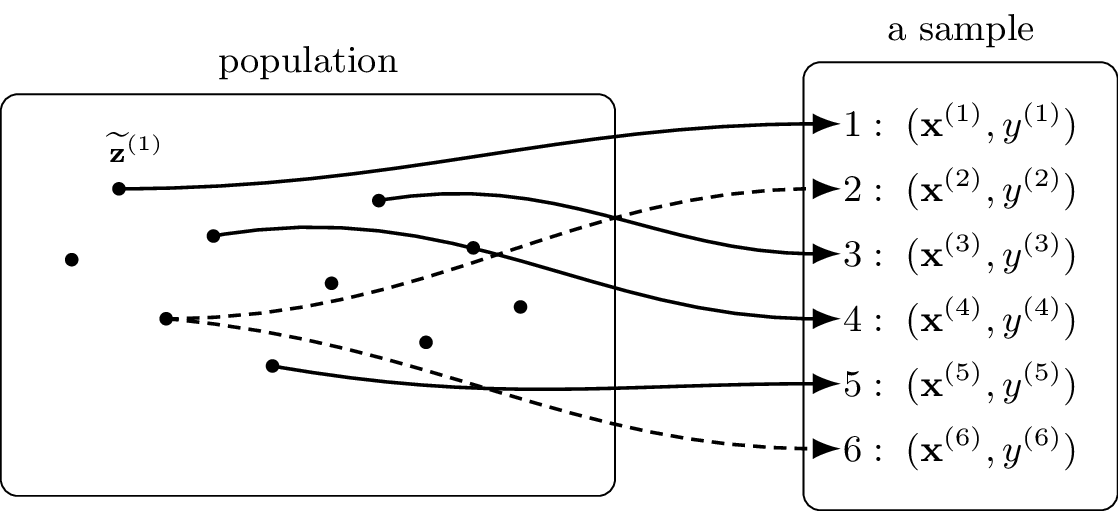Aalto Dictionary of ML – Sample
In the context of machine learning (ML), a sample is a finite sequence (of length $m$) of data points, ${\bf z}^{(1)}, \ldots, {\bf z}^{(m)}$. The number $m$ is called the sample size. Empirical risk minimization (ERM)-based methods use a sample to train a model (or learn a hypothesis) by minimizing the average loss (the empirical risk) over that sample. Since a sample is defined as a sequence, the same data point may appear more than once. By contrast, some authors in statistics define a sample as a set of data points, in which case duplicates are not allowed (Everitt and Skrondal 2010; Upton and Cook 2014). These two views can be reconciled by regarding a sample as a sequence of feature–label pairs, $\left( {\bf x}^{(1)},y^{(1)} \right), \ldots, \left( {\bf x}^{(m)},y^{(m)} \right)$. The $r$-th pair consists of the features ${\bf x}^{(r)}$ and the label $y^{(r)}$ of an unique underlying data point $\widetilde{{\bf z}}^{(r)}$. While the underlying data points $\widetilde{{\bf z}}^{(1)},\ldots,\widetilde{{\bf z}}^{(m)}$ are unique, some of them can have identical features and labels.

For the analysis of machine learning (ML) methods, it is common to
interpret (the generation of) a sample as the realization of a
stochastic process indexed by ${1,\ldots,m}$. A widely used assumption
is the independent and identically distributed assumption
(i.i.d. assumption), where sample elements
$\left( {\bf x}^{(r)},y^{(r)} \right)$, for $r=1,\ldots,m$, are
independent and identically distributed (i.i.d.) random variables (RVs)
with a common probability distribution.
See also: dataset, sequence, independent and identically distributed
assumption (i.i.d. assumption).
Everitt, B. S., and A. Skrondal. 2010. The Cambridge Dictionary of Statistics. 4th ed. Cambridge, U.K.: Cambridge Univ. Press.
Upton, Graham, and Ian Cook. 2014. A Dictionary of Statistics. 3rd ed. Oxford Univ. Press.
📚 This explanation is part of the Aalto Dictionary of Machine Learning — an open-access multi-lingual glossary developed at Aalto University to support accessible and precise communication in ML.
